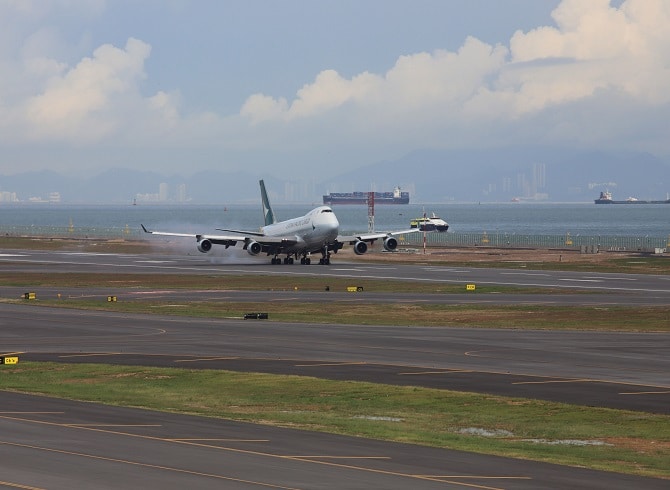Aviation
Flights arrive on the third runway in Hong Kong as Operation Familiarization gets going

(HONG KONG, 8 July 2022, 1030hrs) – Operation familiarisation for flights on the Third Runway, designated as the new North Runway of Hong Kong International Airport (HKIA), started today.
At 0824hrs a Government Flying Service plane landed as the first flight taking part in the familiarisation on the Third Runway, followed by the first commercial flight, a cargo flight from Shanghai Pudong, touching down at 0827hrs.
Final preparation for operation familiarisation on the Third Runway and associated taxiways began in the evening of 7 July, including a joint inspection by Airport Authority Hong Kong and Civil Aviation Department.
As operation familiarisation commenced on the new runway, the Centre Runway is temporarily closed for reconfiguration as part of the Three-runway System (3RS) development. While the Centre Runway is temporarily closed, HKIA will continue to operate as a two-runway system with the new North Runway and the South Runway.
In addition to the Third Runway, the 3RS project comprises the expansion of Terminal 2, development of a new T2 Concourse, Automatic People Mover and Baggage Handling System, and is targeted to complete in 2024 as scheduled.

Aviation
Boeing, Antonov to Collaborate on Defense Projects

– MOU represents Boeing’s commitment to work with Ukrainian industry
– Includes exploring opportunities for collaborating on in-country support of Unmanned Aerial Systems
A Memorandum of Understanding was signed today by Boeing and Antonov Company to investigate potential collaboration on defense-related projects.
“We’re happy to keep collaborating with the Antonov Company to help Ukraine’s economic development and expansion,” stated Ted Colbert, CEO and president of Boeing Defence, Space, & Security.
Airbus and the Antonov An-225: The Best Partnership:Click here
“This agreement demonstrates our ongoing efforts to find more opportunities to work with Ukrainian industry, which was underscored by our signing of the Ukrainian Defence Industry Compact earlier this year.”
The areas of potential collaboration identified in the agreement consist of training, logistical support and overhaul services for tactical Unmanned Aerial Systems utilized by the Ukrainian Armed Forces, which includes the ScanEagle. In addition, the companies will also explore opportunities for Antonov to provide engineering support to Boeing.
The six largest cargo aircraft ever built in the aviation industry:Click here
“A strong, innovative, and efficient defense industry is key to sustainable economic development and national security, and we are extremely excited to collaborate with Boeing,” said Ievhen Gavrylov, CEO of Antonov Company.
This agreement brings a whole new level of opportunity to implement the latest and most effective solutions – in addition to the possibility of future projects with Boeing in the aerospace and defense industry.”
-

 Travel1 week ago
Travel1 week agoAir India to Expand US Operations with Three New Routes After a Decade
-

 Travel2 weeks ago
Travel2 weeks agoWhy We Should Avoid These Stamps in a Passport
-

 Airlines1 month ago
Airlines1 month agoInvestigations Reveal Fake Chinese Titanium in Boeing and Airbus Jets
-

 Tech4 weeks ago
Tech4 weeks agoChina’s CATL Plans 1,800-Mile Electric Plane Launch by 2027
-

 Airport3 days ago
Airport3 days agoTop 10 Largest Airports in the World by Size
-

 Aerospace4 weeks ago
Aerospace4 weeks agoChina’s Fighter Jets Turn Wings into Autonomous Drones
-

 Airlines4 days ago
Airlines4 days agoAir India Rolls Out A350s for Delhi-New York JFK and Newark Routes
-

 Defence3 weeks ago
Defence3 weeks agoBoeing Enhances Chinook with New Engines and Block II Upgrades at $96 Million







